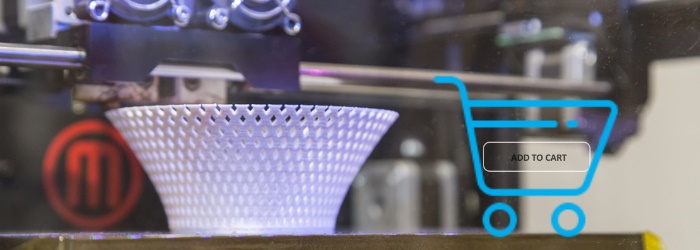How 3D Printing Can Transform the Ecommerce Industry

In 2013, eBay launched an iPhone application, eBay Exact, to help customers to print and buy customizable merchandise from 3D printing companies. Not to be outsmarted, Amazon soon teamed up with several third-party 3-D printing companies, to launch an online store for customers to design 3-D printable toys, jewelry, and home decor etc. In the process, the eCommerce giant was trying to go one up on both eBay and Shapeways — a company which uses its own in-house printers to create physical products for designers — and be the first mover to change the way eCommerce is conducted today.
Are we heading towards a future where 3D printing will completely take over eCommerce? Given the way 3D printing has transformed the healthcare industry, there is no reason to believe otherwise.
The biggest change that 3D printing is capable of bringing about is transforming eCommerce from a market of products to a market of designs. The designs on display are meant to be printed by the buyer — or a third-party manufacturer. For instance, a fashion or crockery company can sell a onetime downloadable design algorithm, which customers can 3D print instantly at home.
Customers will be given templates for a range of products and all they would need to do, is to choose one along with the color, design and other elements and own it within minutes. So what gets sold is not the product, but the design, along with the license to print. When this concept takes over, getting hard copies delivered will become a thing of the past and intellectual property would reign supreme. And that this technology comes at a time when customers want more of personalized shopping experience, will make sure that it gets widely accepted.
For cash-strapped eCommerce companies, 3D printing promises a lot of revenue savings. As 3D printing obviates the need for delivering products, eCommerce companies will have a chance to shift from product-based to service-based model and in the process realize huge savings. Additionally, the technology provides eCommerce companies a chance to reduce inventory costs by focusing on hard-to-find products on demand. It’s perhaps because of this that Walmart is planning to acquire a 3D printing company and explore the technology to reproduce replacement parts.
How much ever alluring it may seem, the bigger question, however, is will consumers find it comfortable to download a design file, choose a material, and then print a product. It is difficult to predict now, but what stands for sure is that the self-printing product market will expand, and as printer prices plummet people would dabble more with getting things printed at home. Once people get comfortable with self-printed products, it could well mean a U-turn for e-commerce.
